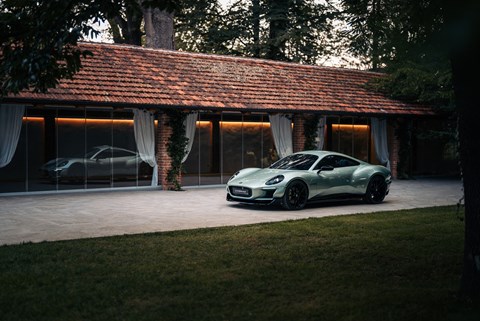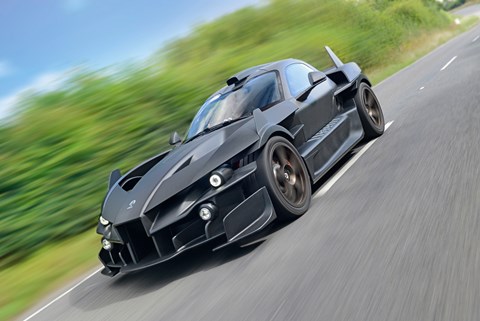► How Caterham, Morgan and Ariel are going EV
► Engine supplies are influencing the changes
► Each approaching electric in different ways
Back in 2009, I was chatting to some Formula 5000 racers who were panicking that the Chrysler 5.0-litre V8s they ran in their single-seaters might cease to be available as the manufacturer had gone into liquidation.
Fortunately, the Chrysler V8 was so ubiquitous that it would need several very bad seasons to get through the millions of engines in existence.
For 2009 and F5000, read 2024 and Britain’s small but vital sports car industry. The issue of supply is one that faces Morgan, Caterham and Ariel today, as they all rely on engines from manufacturers that will build fewer combustion engines as the transition to EV continues.
Morgan uses Ford threes and BMW’s fours and straight sixes, while Caterham goes for Suzuki and Ford, and Ariel has a long history with Honda fours.
It’s a strange situation they find themselves in. Neither customers nor legislators are pushing these companies to ditch the internal-combustion engine; the EU announced the 2035 ban won’t apply to companies that build fewer than 1000 cars a year. But their hands may be forced by their suppliers.

It’s one of the reasons why Morgan has unveiled the XP1, a prototype electric car based on the Super Three (although, ironically, the legislation doesn’t apply to tricycles). As Matt Hole, Morgan’s new CTO, explains: ‘This gives us a future opportunity for our powertrain changing.
‘Historically, we’ve flirted with EVs [most recently, Morgan developed the EV3 back in 2015 but it never made it into production] but have never had the technology to implement them properly. We have created an interest in the market and are indirectly pressured by legislation, but it’s mainly down to where we get our powertrains from. We will offer ICE and EV in parallel in the future.’
All of which has encouraged a new spirit of experimentation among the ‘men in sheds’ who make niche sports cars. Morgan, for instance, has realised that the R&D work necessary to build the XP1 has given it a new mastery of software that will help both the future EV and also the next versions of the Plus 4 and 6.
It has meant Hole and his team can run many options through the software – where the 100kW electric motor might best fit, for instance –without going to the expense of building it.
That’s handy with a car that has no confirmed build date. ‘The modelling tool allows us to visualise if we could put the motor and planetary gearbox in the ideal place [behind the roll hoops] instead of in the transmission tunnel. It also allowed us to tune the sound and the character of the motor.’
Weight is still an issue, although Hole claims the 33kWh battery means the XP1 is only around 70kg heavier than the combustion version.

Similarly, Caterham is well aware that its minimalist USP could be under threat. Last summer it unveiled two electric concepts – one of them such a departure that it actually features a roof, the Project V.
This has firmer production details than Morgan or Ariel as Caterham hopes the V will be on sale in 2026. It rides on a bespoke platform and, while it doesn’t look like any other Caterham, it promises the same attention to light weighting that has been the brand’s hallmark, with a target of 1190kg.
This will help keep the pace on the correct side of exciting (270bhp and a 0-62mph time below 4.5 seconds) and means a competitive 249-mile range, thanks to a lack of flab rather than a big battery.
Traditionally, veering away from your core hasn’t worked well for these sorts of companies. Just look at the Caterham 21. Adaptability will be key to survival.
Ariel’s hy-tech alternative

Technically the Ariel Hipercar is not an electric car. It’s a hybrid, but not in the way a Prius is a hybrid. It sports a gas-turbine range-extender coupled to a 62kWh battery feeding a pair of 295bhp electric motors.
The car is still in development and, like the Morgan XP1, won’t be with customers any time soon. Ariel’s MD, Henry Siebert-Saunders, told us that something will come of it eventually, but ‘whether it’s the Hipercar specifically or something else using the technology for another application’ is still up for discussion. Watch this space.